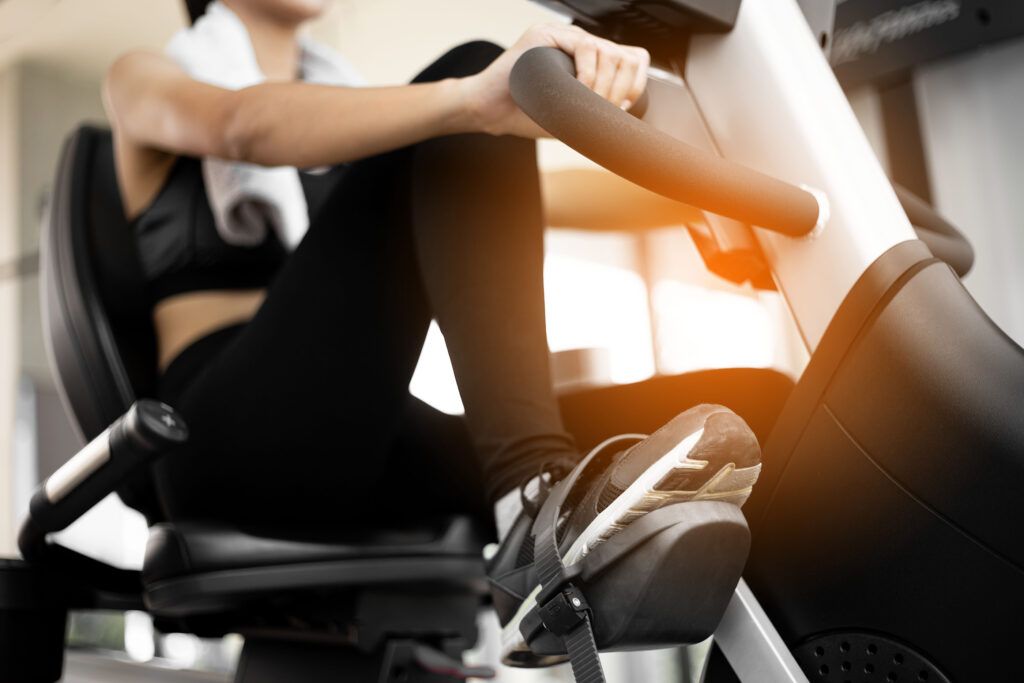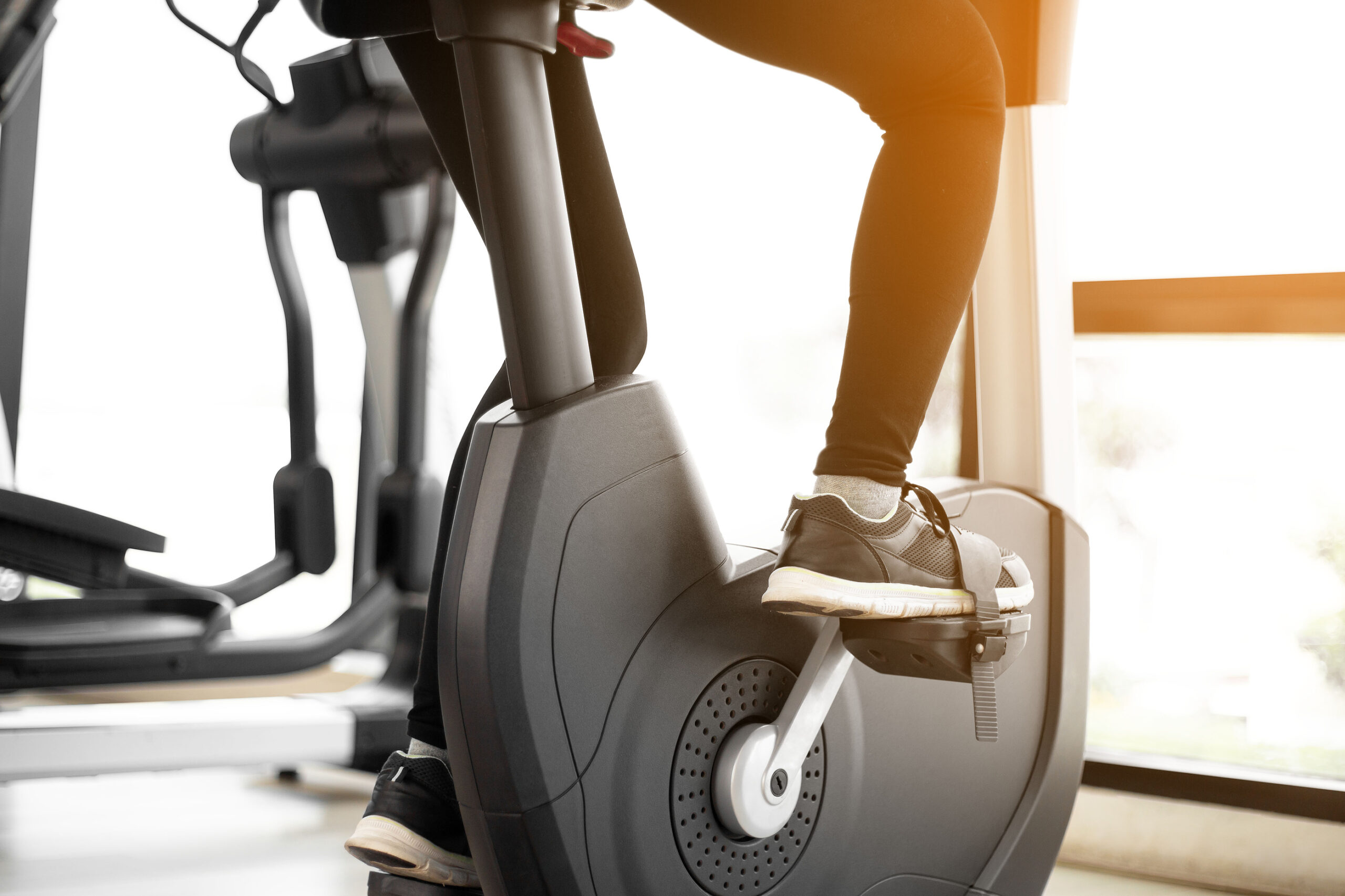Knee pain is a frustratingly common ailment and all “bad” knees aren’t the same, but generally speaking, exercising is always a good idea.
The key is trying to find a mode of exercise that allows your knees to move comfortably without causing discomfort.
Are exercise bikes capable of doing this?
Yes, but all exercise bikes are not equal.
In order to find the right bike for your achy knees it helps to understand what’s causing your knee pain to begin with.
Then, you can work on finding an exercise bike that allows you to ride with as little discomfort as possible.
In this guide, we’ll start with a brief review of the most common sources of knee pain.
Then I’ll discuss how exercise bikes can help with these different knee issues (as well as which exercise bikes will likely be the most comfortable to use).
After reading, you’ll be more confident in finding the right exercise bike to help keep your bad knees in top form.
What Causes Knees To Go “Bad”?
Knee pain can be a vicious cycle and it tends to go something like this – your knee starts hurting, so you start moving less; this lack of movement makes your knee stiffer and your muscles weaker, so your knee starts hurting more, which leads to even less movement.
Which of course, leads to even more pain, causing you to move even less, and so forth.
This cycle can continue to the point where you ultimately start losing mobility and the ability to care for yourself.
So, in order to combat this you might start trying an exercise program.
This is a good idea, but if you aren’t doing the right kind of exercises, you could end up causing more pain, thus putting yourself back into the cycle mentioned above.
A lot of things can cause knee pain, but below are a few of the most common ailments that contribute to knee discomfort:
Patellofemoral Pain Syndrome
The name sounds intense, but it really just means pain around the knee cap.
If you’ve ever heard the terms “runner’s knee” or “jumper’s knee”, it’s all the same thing.
With patellofemoral pain syndrome (PFPS), basically something effects the way the patellar (aka knee cap) is gliding over your knee joint.
This altered movement, over time, causes things to get irritated, which means pain.
Things like muscle tightness, muscle weakness, poor alignment, wrong shoes, and just repeated movement can all contribute to PFPS.
Patellar tendonitis, another common condition, can also be caused by patellofemoral dysfunction.
PFPS is common in folks who are more physically active, but can really occur in anyone.
Treatment for this type of pain often includes things like ice, rest, stretching, and strengthening exercises and physical therapy can be very helpful.
Sprains/Strains/Tears
Do you know the difference between a sprain and a strain?
A sprain is when a ligament is damaged; a strain is when a muscle or tendon gets damaged.
When it comes to the knee, there are plenty of ligaments and muscles that can cause pain.
We’ve all probably heard of the ACL, an internal ligament that helps stabilize the knee, but there are 3 more ligaments attached to the knee that can also get damaged: the PCL, the MCL, and the LCL.
Spraining (or tearing) any of these ligaments can cause knee pain and the time to recover will depend greatly on the severity of the damage done.
And in the case of tears, surgery is often necessary.
Muscle strains of the quadriceps, hamstrings, and adductor muscles can all cause knee pain as well and again, time for recovery depends mostly on severity of the strain, as well as things like age and activity level.
Conservative treatment for sprains and strains usually consists of ice, rest, and use of NSAIDS (non-steroidal anti-inflammatory drugs) to help with pain and swelling.
Pain caused by sprains and strains almost always occurs with some type of injury, either activity related or from a fall.
Osteoarthritis
Osteoarthritis (OA) refers to a degeneration of the cartilage between two bones, resulting in increased wear and tear between those bones, resulting in pain.
OA is a major cause of pain for older adults and can occur in really any joint in our body, but it’s especially common in the knees.
OA in the knee can cause pain with walking and standing, but it can also cause a generalized aching in the joint when resting too.
A tell-tale sign of OA is a feeling of stiffness or aching when sitting in one position for too long.
Conservative treatment includes stretching and strengthening exercises and meds to help control pain levels.
When OA gets advanced, a joint replacement is often performed and then you have to deal with the following rehab.
As a physical therapist, I often educate my OA patients that low-grade, continuous movement is a great way to exercise because the gentle movement helps keep the joint from getting stiff (as well as keeping it “lubricated” with synovial fluid).
Exercise Bikes Can Help

Ok, so there are obviously a lot of other knee conditions that cause pain, but the above represent a large population of the folks dealing with knee discomfort.
And with all of the above conditions, exercise is recommended to help recovery.
With PFPS, the treatment will usually include more stretching and strengthening to help balance any muscular imbalances that are causing the patella to track irregularly, but even so, exercise bikes can still play an important part.
And with sprains/strains and OA, exercise bikes can be paramount in keeping the joint moving, regardless if surgery was necessary or not.
The great thing about stationary bikes is that they’re a non-weight bearing form of exercise (meaning you get to sit down), so they immediately put less stress through the knee, hip, and ankle.
And less stress is a good thing when dealing with achy joints.
Even folks who have strict weight bearing precautions following surgery are usually still allowed to exercise on a recumbent bike.
Which is great when it comes to maintaining range of motion and helping to regain strength in the quads and hamstrings.
When it comes to exercise bikes, recumbents are usually the best option when it comes to rehabbing or exercising with achy knees because they inherently put the least amount of stress on the joint.
And that’s due to their recumbent design.
Recumbent bikes have their pedals and flywheels positioned in front of you (instead of under you), putting your legs in a horizontal position.
And this positioning reduces compression forces through the knee.
Recumbent bikes are usually easier to get on/off of too, which never hurts.
This is why most physical therapy and rehab settings have recumbent bikes.
Depending on your mobility and pain level though, that’s not to say a classic upright or spin bike wouldn’t be doable either – it’s all about comfort.
If you can get on an upright bike and pedal without pain, that bike will likely work fine too (remember to always listen to your doctor’s orders!)
The same goes for spin bikes, but spin bikes tend to put the most stress through our knees of the bunch – you know, with their heavy flywheels and vertical design.
And remember the old sayin’ “No pain, no gain”?
Well, that’s wrong the majority of the time, especially when dealing with joint pain.
If you feel pain while exercising, that’s usually your body telling you something isn’t right – so forcing yourself through it usually just ends up with more pain and damage being done to your joint.
Which is no good.
Exercise bikes can offer a low-impact, gentle way to keep your knees moving and your muscles engaged while your knee pain is being treated.
They can help maintain/improve lower body strength, while also improving your endurance and cardiovascular health too.
And remember what I said about OA and continuous, low-grade movement?
Well, few things check those boxes like a recumbent bike.
Overall, stationary bikes can offer a great way for folks dealing with knee pain to exercise, but it’s all about keeping the pain level to a minimum.
Final Thoughts
There are a lot of things that can cause good knees to go bad, but the conditions mentioned briefly above represent the most common ailments.
Patellofemoral issues are very common for athletes, weekend warriors, and pretty much anyone else who runs, jumps, or exercises on a regular basis.
By the way, you can also get PFPS by cycling too.
Sprains and strains are also usually caused by some type of accident or trauma, while OA pain is usually more gradual in its onset.
When dealing with knee pain and injuries, it’s important to always abide by your doctor’s orders – if they give you precautions, please listen to them.
Ignoring physician’s precautions (especially if you’e had surgery) can result in more injuries and even longer recovery times.
That said, exercise bikes are generally a very safe mode of exercise.
They’re low-impact, but allow the knees to keep moving. They also provide a way to safely maintain quad/hamstring strength while dealing with a recovering knee.
Recumbent bikes are probably the safest bet, but upright bikes and indoor cycles can be used too as long as they don’t cause knee pain while using ’em.
And regardless of what type of bike you’re using, make sure you have it set up to allow you to comfortably use it.
Again, if you feel pain while riding, something isn’t right.
Well, that about does it.
I hope you found this guide helpful. If you have any questions or comments, feel free to leave ’em below and I’ll get back to you soon.
And when in doubt about your knees and exercise, always refer to your doctor or friendly neighborhood physical therapist.




